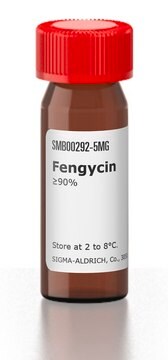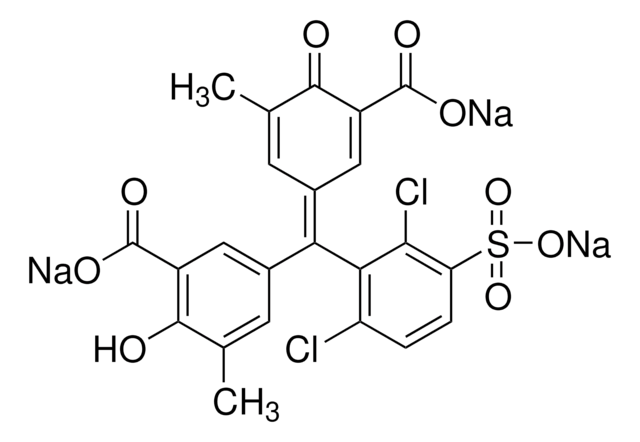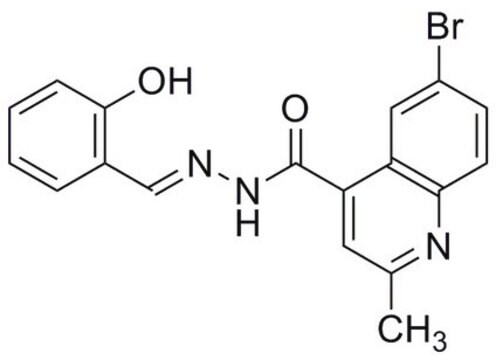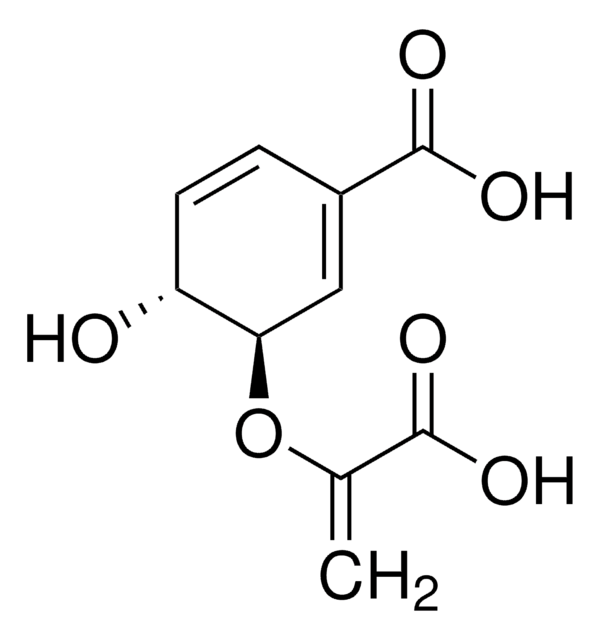E3910
Enterobactin
from Escherichia coli, ≥98% (HPLC)
Synonym(s):
Enterochelin
Sign Into View Organizational & Contract Pricing
All Photos(1)
About This Item
Empirical Formula (Hill Notation):
C30H27N3O15
CAS Number:
Molecular Weight:
669.55
UNSPSC Code:
12191503
NACRES:
NA.25
Recommended Products
biological source
Escherichia coli
Quality Level
Assay
≥98% (HPLC)
shipped in
wet ice
storage temp.
−20°C
InChI
1S/C30H27N3O15/c34-19-7-1-4-13(22(19)37)25(40)31-16-10-46-29(44)18(33-27(42)15-6-3-9-21(36)24(15)39)12-48-30(45)17(11-47-28(16)43)32-26(41)14-5-2-8-20(35)23(14)38/h1-9,16-18,34-39H,10-12H2,(H,31,40)(H,32,41)(H,33,42)/t16-,17-,18-/m0/s1
InChI key
SERBHKJMVBATSJ-BZSNNMDCSA-N
General description
Enterobactin synthesis occurs via nonribosomal peptide synthetases. The precursor chorismic acid is converted to intermediates isochorismate, 2,3-dihydro-2,3-dihydroxybenzoate and 2,3-dihydroxybenzoic acid (DHB). Final step involves the DHB and L-serine amide linkage. A total of six enzymes (ent A −F) mediate enterobactin biosynthesis.
Application
Enterobactin has been used:
- as a positive control in tryptophan fluorescence quenching experiments
- as a reference standard in high performance liquid chromatography to quantify Kosakonia radicincitans culture medium siderophores
- in the crystallization reservoir to remove iron contamination in the medium and in Fe-enterbactin binding studies
This preparation of enterobactin is not bound to iron and will bind to Fe3+ and Fe2+ in solution.
Biochem/physiol Actions
Iron mobilization and uptake by microbes is mediated by low molecular weight complexing agents named siderophores. Enterobactin is a catechol (a benzenediol, C6H4(OH)2) type siderophore produced in small quantities by Escherichia coli and related enteric bacteria when grown on iron deficient media, and is one of the most powerful ferric ion complexing agents known. Enterobactin is a very effective sequestering agent for iron, able to remove iron from proteins, insoluble iron complexes, and other siderophores. Studies of the chemistry, regulation, synthesis, recognition, and transport of enterobactin make it the best-understood siderophore.
related product
Product No.
Description
Pricing
Storage Class Code
11 - Combustible Solids
Flash Point(F)
Not applicable
Flash Point(C)
Not applicable
Choose from one of the most recent versions:
Already Own This Product?
Find documentation for the products that you have recently purchased in the Document Library.
Customers Also Viewed
Neal Paragas et al.
Biochimica et biophysica acta, 1823(9), 1451-1458 (2012-06-26)
Kidney damage induces the expression of a myriad of proteins in the serum and in the urine. The function of these proteins in the sequence of damage and repair is now being studied in genetic models and by novel imaging
Shubhangi Agarwal et al.
Scientific reports, 7, 42812-42812 (2017-02-22)
Molecular mechanisms of xenosiderophore and heme acquisitions using periplasmic binding protein (PBP) dependent ATP-binding cassette transporters to scavenge the essential nutrient iron are elusive yet in Vibrio cholerae. Our current study delineates the structures, dynamics and ligand binding properties of
Enterobactin: an archetype for microbial iron transport
Raymond KN, et al.
Proceedings of the National Academy of Sciences of the USA, 100(7), 3584-3588 (2003)
Beata Krawczyk et al.
Pathogens (Basel, Switzerland), 9(5) (2020-04-30)
Escherichia coli were isolated from three patients with chronic rhinosinusitis (CRS) by intraoperative sinus tissue biopsy. Taking into account the unusual replicative niche and previous treatment failures, it was decided to focus on the virulence and drug resistance of these
Emily M Saad et al.
Nature communications, 8(1), 1590-1590 (2017-11-19)
The chromium (Cr) isotope system has emerged as a potential proxy for tracing the Earth's atmospheric evolution based on a redox-dependent framework for Cr mobilization and isotope fractionation. Although studies have demonstrated that redox-independent pathways can also mobilize Cr, no
Our team of scientists has experience in all areas of research including Life Science, Material Science, Chemical Synthesis, Chromatography, Analytical and many others.
Contact Technical Service


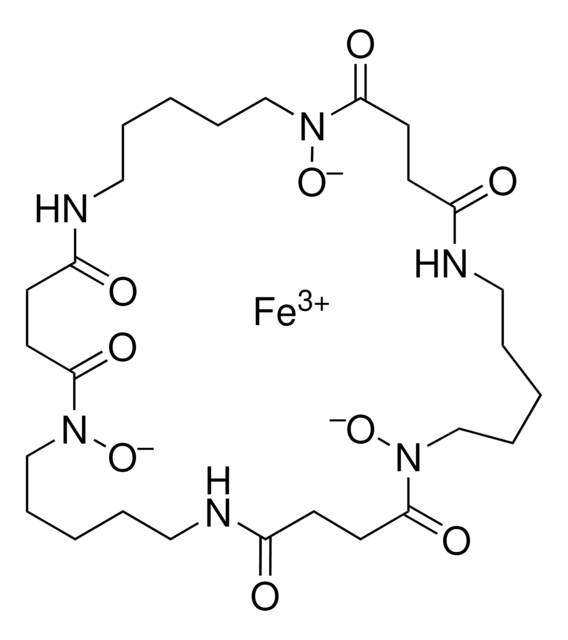

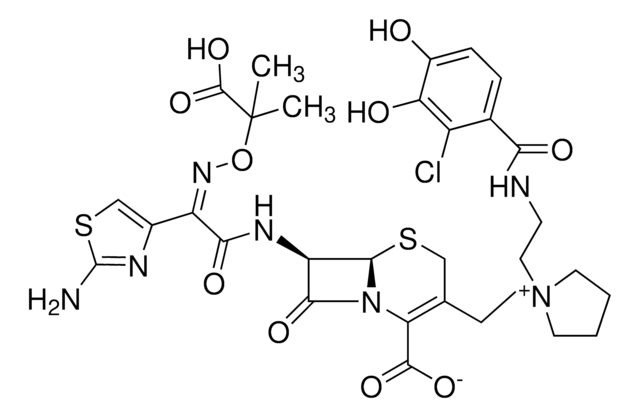
![(±)-(E)-4-Ethyl-2-[(Z)-hydroxyimino]-5-nitro-3-hexen-1-yl-nicotinamide ≥97%](/deepweb/assets/sigmaaldrich/product/structures/285/524/99543643-31d0-4c4f-b8da-9b1f872868ad/640/99543643-31d0-4c4f-b8da-9b1f872868ad.png)

